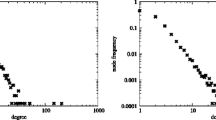Abstract
The Routing Information Protocol (RIP) may introduce misleading routing information into the routing table, due to network topology changes such as link or router failures. This is known as the counting to infinity problem. In the past, the distance metric had to be below 16 hops in order to keep this counting within reasonable limits. In this paper a more elaborate approach is presented in order to recognize those router interfaces which might have received misleading routing messages. This is accomplished by evaluating routing updates more carefully than is done by the well known split horizon approach. This new approach gets by without any additional message exchange between the RIP-protocol partners. In contrast to other approaches, the router interfaces are examined in pairs to determine if a loop exists between them. The algorithm locally extracts all the information it needs from the normal update messages that are exchanged between RIP neighbors and is thus executed in constant time. Only some minor calculations have to be carried out to gain the knowledge that is necessary to recognize those interfaces which may have received misleading routing information. Hence, this new distance vector routing without counting to infinity can be used in complex networking environments.
Similar content being viewed by others
References
R. Braden and J. Postel, Requirements for internet gateways, IETF RFC 1009, USC/Information Sciences Institute (June 1987).
C. Cheng, R. Riley, S.P.R. Kumar and J.J. Garcia-Luna-Aceves, A loop-free extended Bellman-Ford routing protocol without bouncing effect, in: ACM SIGCOMM Symposium on Commun. Arch. and Protocols, Austin, TX, September 1989, pp. 224-236.
J.J. Garcia-Luna-Aceves, A unified approach to loop-free routing using distance vectors or link states, in: ACM SIGCOMM Symposium on Commun. Arch. and Protocols, Austin, TX, September 1989, pp. 212-223.
J.J. Garcia-Luna-Aceves, Loop-free routing using diffusing computations, IEEE/ACM Transactions on Networking 1(1) (1993) 130-141.
J.M. Jaffe and F.M. Moss, A responsive routing algorithm for computer networks, IEEE Transactions on Communications 30(7) (July 1982) 1762-1785.
O. Kandel, RIP-MTI - Simulation des erweiterten RIP-algorithmus, Diploma thesis, University of Koblenz-Landau, Institute for Computer Science, Koblenz, Germany (July 2000) (in German), Java Applet: http://www.uni-koblenz.de/ ∽steigner/ripmti/.
B. Rajagopalan and M. Faiman, A new responsive distributed shortest path routing algorithm, in: ACM SIGCOMM Symposium on Commun. Arch. and Protocols, Austin, TX, September 1989, pp. 237-246.
G.C. Sackett and C. Metz, ATM and Multiprotocol Networking (McGraw-Hill, New York, 1996).
A.J. Schmid, Solution for the counting to infinity problem of distance vector routing, Research report 7-98, University of Koblenz-Landau, Institute for Computer Science, Koblenz, Germany (June 1998), URL http://www.uni-koblenz.de/fb4/publikationen/gelbereihe/RR-7-98.ps.gz.
A.J. Schmid, RIP-MTI: Minimum-effort loop-free distance vector routing algorithm, Diploma thesis, University of Koblenz-Landau, Institute for Computer Science, Koblenz, Germany (March 1999).
A.J. Schmid and C. Steigner, A solution for the counting to infinity problem of distance vector routing, in: Proc. of the 2nd IASTED Internat. Conf. on Parallel and Distributed Computing and Networks, Brisbane, Queensland, Australia, December 1998, pp. 471-477.
K.G. Shin and M.-S. Chen, Performance analysis of distributed routing strategies free of ping-pong-type looping, IEEE Transactions on Computers 36(2) (February 1987) 870-881.
A.S. Tanenbaum, Computer Networks, 3rd ed. (Prentice-Hall, Englewood Cliffs, NJ, 1996).
Author information
Authors and Affiliations
Rights and permissions
About this article
Cite this article
Schmid, A., Steigner, C. Avoiding Counting to Infinity in Distance Vector Routing. Telecommunication Systems 19, 497–514 (2002). https://doi.org/10.1023/A:1013858909535
Issue Date:
DOI: https://doi.org/10.1023/A:1013858909535




